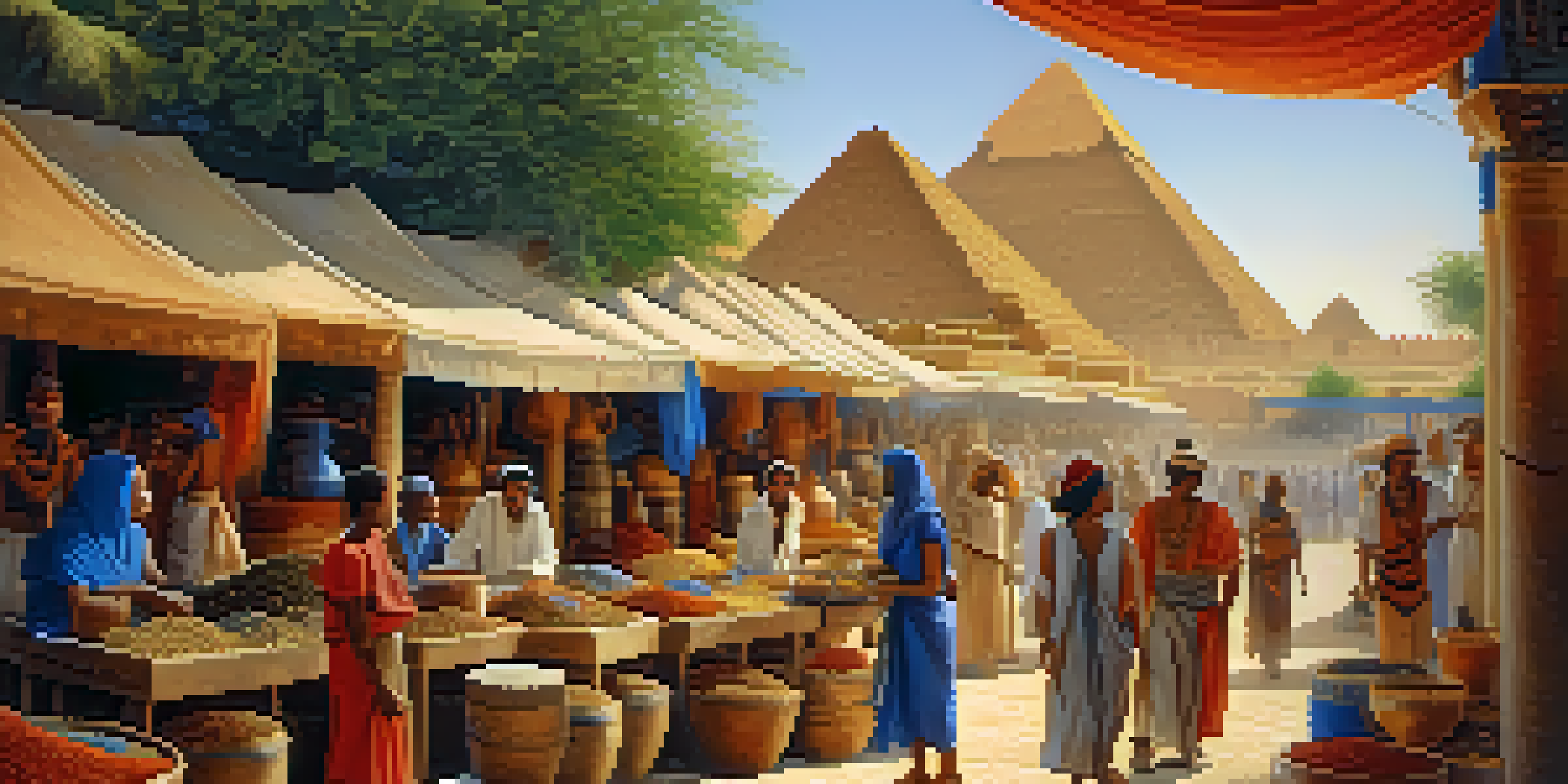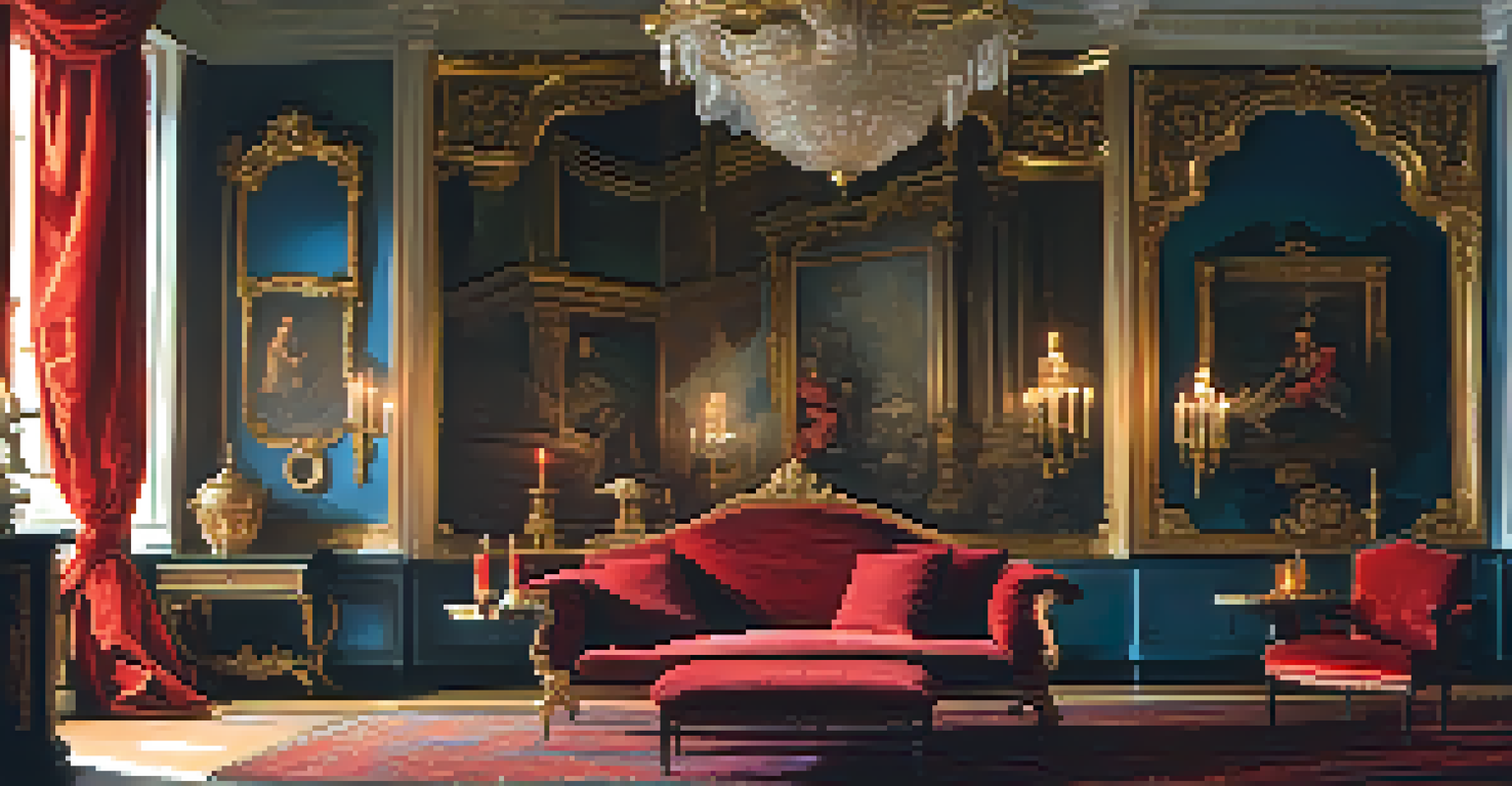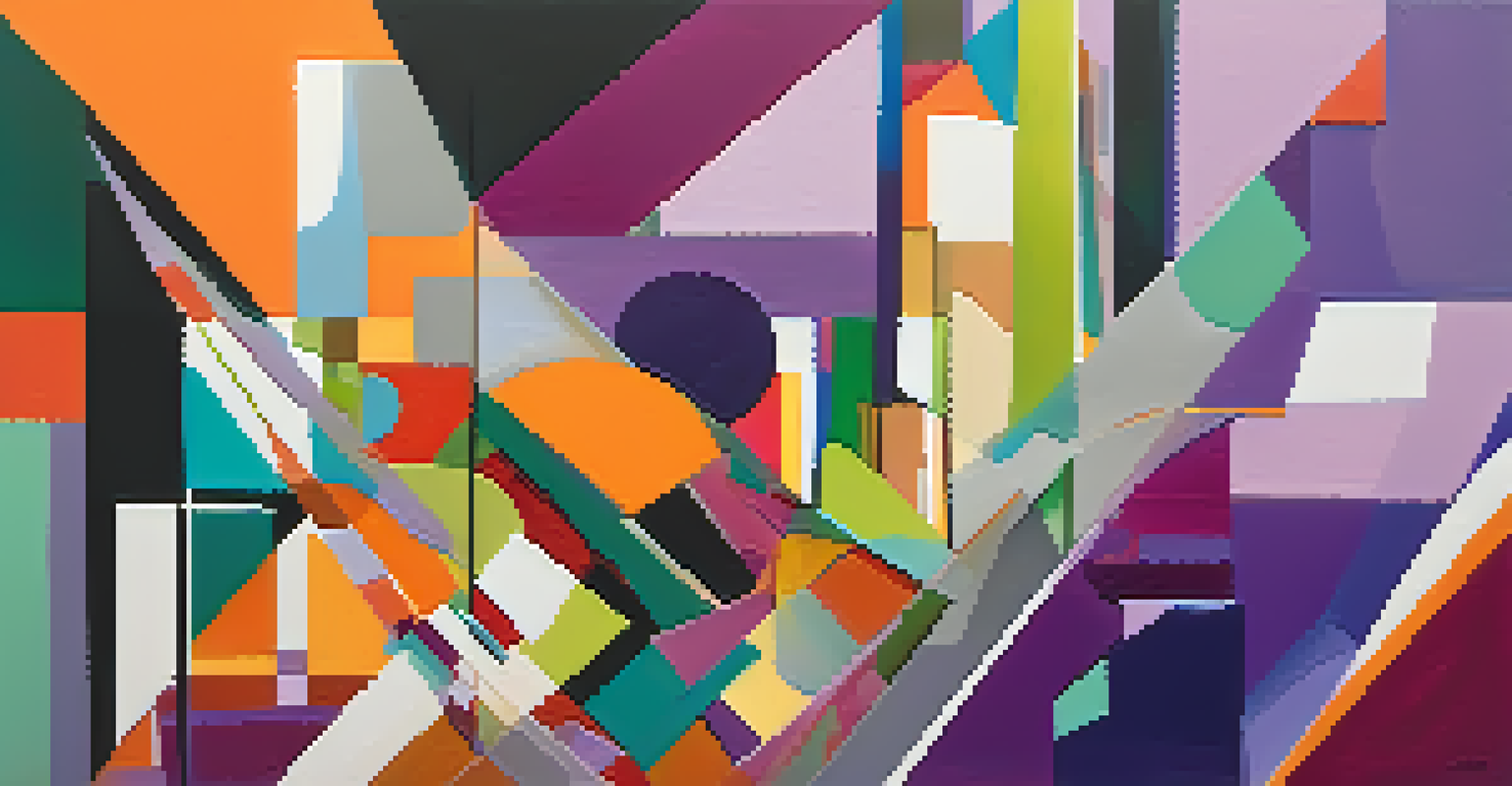Color Schemes in Art History: Trends Through the Ages

The Significance of Color in Art Through History
Color has always played a vital role in art, serving as a means of expression and communication. From ancient cave paintings to contemporary works, artists have used color to convey emotions, ideas, and even social commentary. The choice of color can evoke feelings and set the mood, making it a powerful tool in the artist's kit.
Color is the keyboard, the eyes are the harmonies, the soul is the piano with many strings.
Throughout history, different cultures have ascribed unique meanings to colors. For instance, red often symbolizes passion or danger, while blue might represent tranquility or sadness. Understanding these associations allows us to appreciate how artists use color intentionally to connect with viewers on a deeper level.
As we dive into the trends of color schemes in various art movements, we can see how these choices reflect the values and aesthetics of the times, shaping not only the artworks themselves but also the broader cultural narratives.
The Vibrant Palette of Ancient Civilizations
In ancient civilizations, color was often derived from natural pigments, leading to a limited but vibrant palette. For example, the Egyptians utilized bright blue from lapis lazuli and rich reds from ochre, creating bold and striking works that remain iconic today. These colors were often symbolic, serving religious or ceremonial purposes.

The use of color in ancient art also conveyed social status and power. For instance, purple dye was expensive and reserved for royalty in many cultures, which made its appearance in art a statement of wealth and influence. This choice of color helped reinforce the social hierarchies of the time.
Color as Expression in Art
Throughout history, artists have utilized color as a powerful means of expression, conveying emotions and ideas that connect with viewers.
Moreover, the color schemes of ancient art often reflected the environment and materials available to these civilizations, showcasing an intimate connection between culture and the natural world.
The Impact of the Renaissance on Color Theory
The Renaissance marked a significant shift in the use of color, as artists began to explore color theory more deeply. With the revival of classical ideas, painters like Leonardo da Vinci and Raphael experimented with perspective and chiaroscuro, using color to create depth and realism. This period saw the emergence of oil paints, which allowed for richer and more nuanced color applications.
The colors live a remarkable life of their own that is absolutely inevitable.
Artists started to understand how colors interact with one another, leading to more sophisticated color palettes. The use of complementary colors became more prevalent, enhancing the vibrancy and emotional impact of their work. This exploration laid the groundwork for future generations of artists.
Additionally, the Renaissance’s focus on humanism influenced color choices, as artists aimed to depict the human experience more authentically. The emotive power of color was harnessed to tell stories that resonated with viewers on a personal level.
The Baroque Era: Drama and Contrast in Color
The Baroque era embraced dramatic contrasts and bold color combinations, reflecting the intense emotional and spiritual experiences of the time. Artists like Caravaggio and Rubens used deep shadows and bright highlights to create a sense of movement and dynamism in their paintings. This technique, known as tenebrism, heightened the emotional stakes of their work.
Color during this period was not just about aesthetics; it was also about conveying powerful narratives. Rich reds, golds, and deep blues were often employed to evoke feelings of grandeur and drama, enhancing the viewer's experience. The lavish use of color reflected the opulence of Baroque society.
Cultural Significance of Color
Different cultures have assigned unique meanings to colors, influencing how they are used in art to reflect social status, beliefs, and narratives.
Furthermore, the theatricality of Baroque color schemes influenced architecture and interior design, where vibrant hues were used to create immersive environments that captivated audiences and patrons alike.
Impressionism: Embracing Light and Color
The Impressionist movement marked a radical departure from traditional color use, as artists sought to capture the fleeting effects of light on their subjects. Instead of mixing colors on a palette, painters like Monet and Renoir applied pure, unmixed colors directly onto the canvas. This technique created a sense of vibrancy and movement, almost as if the painting was alive.
Impressionists also focused on the changing qualities of light throughout the day, resulting in color schemes that varied dramatically based on time and weather. Soft pastels in morning light transformed into rich, vibrant hues at sunset, showcasing nature's beauty in a dynamic way.
This approach not only revolutionized the use of color but also encouraged viewers to perceive art differently. Color became a means of capturing emotion and experience rather than just representing reality, inviting the audience to engage with the artwork on an emotional level.
Modernism: Color as Expression and Abstraction
With the rise of Modernism, artists began to experiment with color in entirely new ways, often prioritizing emotional expression over realistic representation. Movements like Expressionism and Fauvism embraced vivid, non-representational colors as a means of conveying deep feelings and personal experiences. Artists such as Matisse used wild, saturated hues to evoke emotions rather than to realistically depict the world.
This era also saw the exploration of color theory and its psychological effects. Artists became increasingly aware of how colors could influence mood and perception, leading to innovative uses of color in abstract forms. Color was no longer just a tool for depiction but a language in its own right.
Evolution of Color Theory
Art movements from the Renaissance to Modernism have seen a continuous evolution in color theory, allowing artists to explore deeper emotional and abstract expressions.
In this context, the combination and juxtaposition of colors were essential in creating meaning, allowing artists to communicate complex ideas and emotions. The bold choices of this time paved the way for contemporary art, where color continues to play a central role.
Postmodernism: Color in a Fragmented World
Postmodernism brought forth a diverse array of styles and approaches to color, reflecting the complexities of contemporary life. Artists began to challenge traditional notions of beauty and representation, often using color in unexpected ways. This period saw the rise of mixed media and collage, where colors could clash and harmonize simultaneously.
In a fragmented world, color schemes became symbolic of cultural and social commentary. Artists like Keith Haring and Andy Warhol utilized bold colors to address issues such as consumerism and identity, infusing their work with a sense of urgency and relevance. The choice of colors often served to provoke thought and encourage dialogue.

Moreover, postmodern art embraced irony and playfulness, allowing for a more personal and subjective interpretation of color. This opened up new avenues for artistic expression, where color could be both a medium and a message, inviting viewers to engage in a deeper conversation about society and culture.